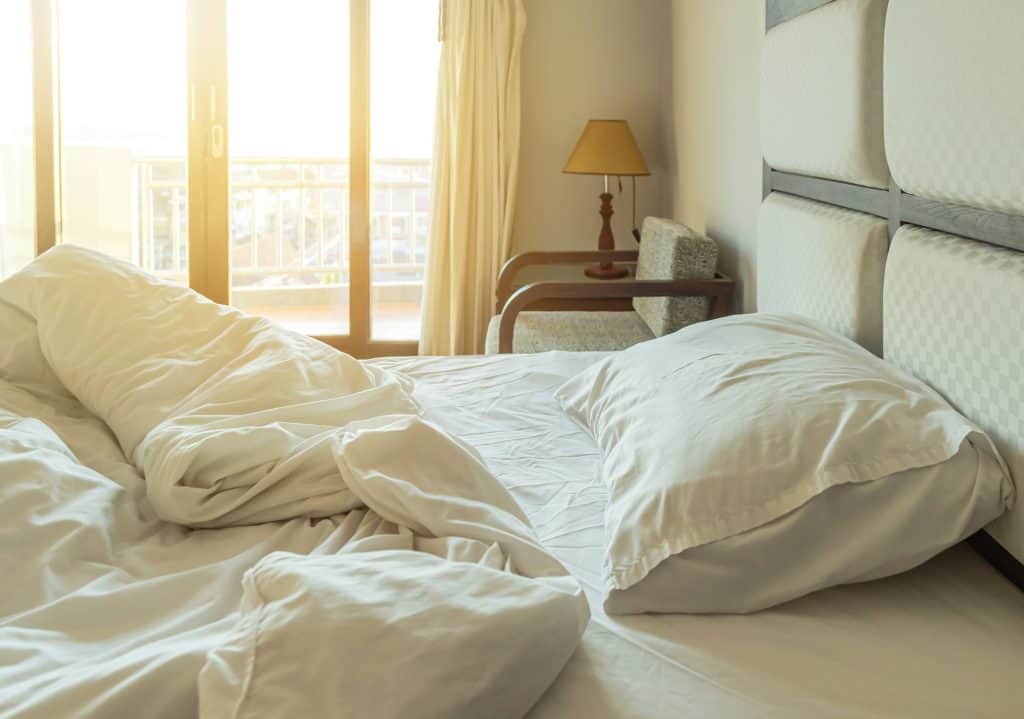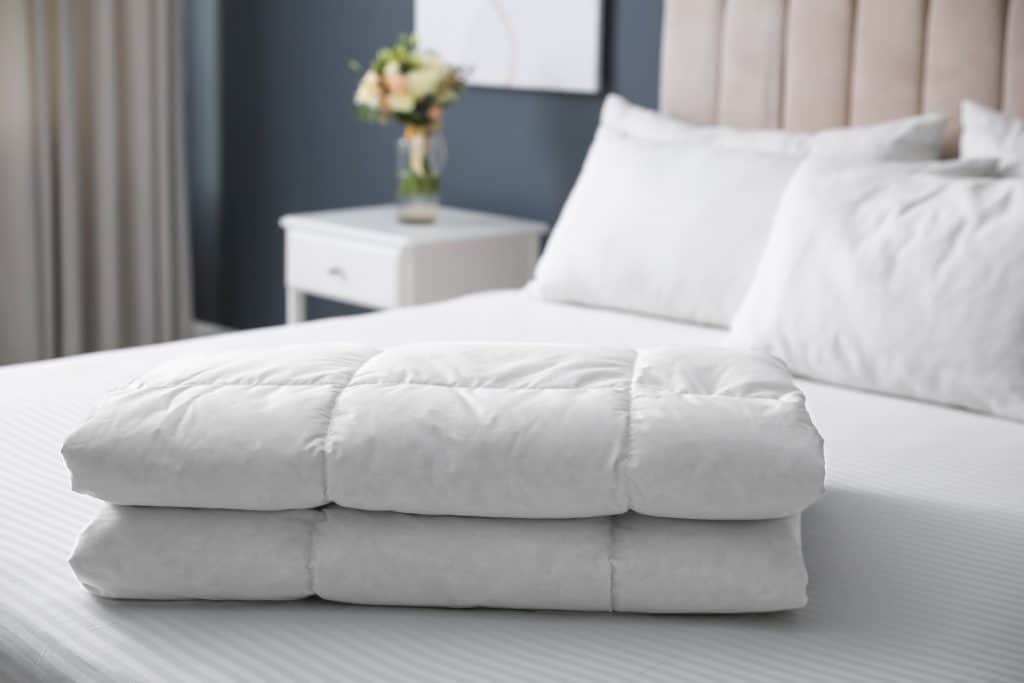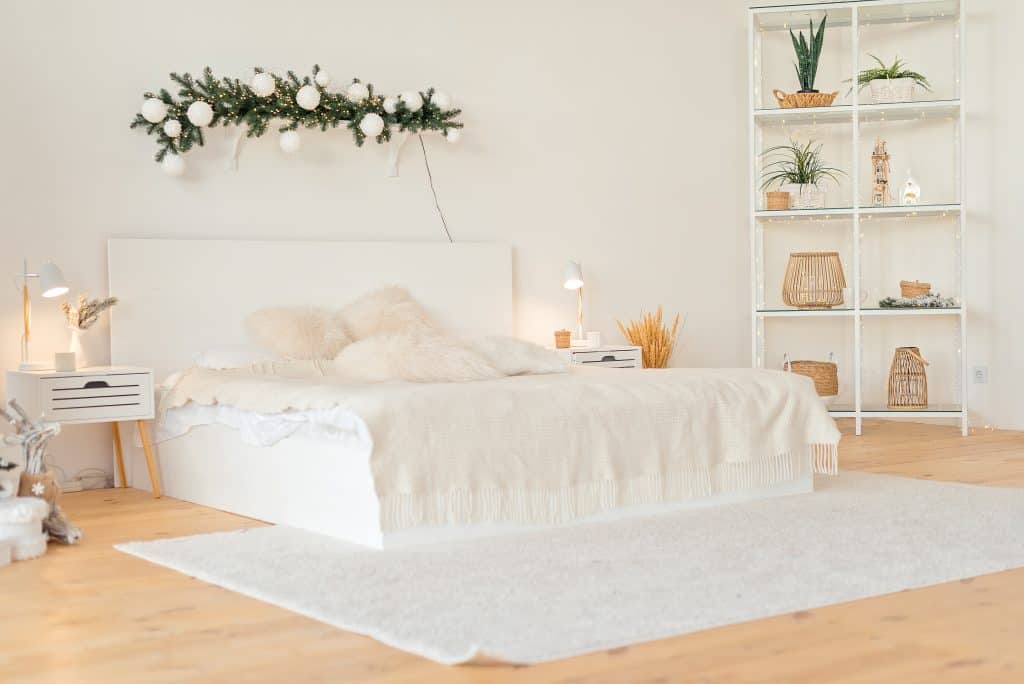
Whether you’re shopping for a new apartment or seeking to spruce up your bedroom, the everlasting comforter vs duvet debate would have crossed your mind. In a world where every product is designed to outdo its competitors in one aspect or another, consumers are left to bear the tough and seemingly ‘make or break’ decisions that may affect their long-term spending habits.
Are duvet covers simply the more luxurious yet impractical choice or have traditional comforters become a thing of the past? This article aims to assist in weighing the pros and cons of each alternative to ensure you make the best possible buy. But first, what is a duvet cover?

What is a Duvet?
Often affiliated with the term ‘comforter’, especially in the United States, duvets are a specific classification of bedding that comprises of a soft flat bag filled with down, feathers, wool, or a synthetic alternative.

What is a Duvet Cover?
Functioning much like a pillowcase, duvet covers are a duvet’s protective, removable coat. Originating from Europe, the combination of duvets and its covers were designed for optimal thermal insulation and convenience. Thanks to these duvet sets, homeowners are now granted the luxury of prepping their beds using a single covering instead of a combination of sheets, blankets, and quilts.
What’s more, these covers are cost and time efficient, enabling homeowners to skip the complicated and expensive drycleaning processes of traditional duvets and comforters. These covers are not only easy to remove and clean, but also offer the opportunity to customize the look of your bed and room without having to completely redecorate.
Duvet Cover Pros
- Practical to make the bed with.
- Convenient to clean.
- Versatile and customizable styling.
- Easy to remove or replace.
Duvet Cover Cons
- The filling may clump up over time. This may be time-consuming to adjust.
- Can be challenging to assemble.

Why are Duvet Covers so expensive?
It is no secret that duvet covers tend to represent a significantly heavy investment when planning the intricate details of your home. This is especially so for duvets that feature full or semi-feather filling. Most homeowners who typically purchase their bedding as a set, rest easy knowing that the duvet cover will reflect the same high quality.
Of the innumerable reasons why duvet covers are so expensive, these are the most notable:
Fabric
Beyond the excess amount of fabric needed to wrap a duvet and drape larger beds, the value of duvet covers can easily be attributed to higher fabric costs related to quality, easy-of-care, and wrinkle-resistant home bedding fabrics. Due to the unavoidable wear and tear of everyday items, these fabrics were designed to withstand the harshest of daily use, with little need for maintenance. As a result, well-made duvet covers feature higher thread counts to provide that much-needed durability. Unsurprising, the presence of intricate detailing and design, such as button tabs and covered welting cords, will further drive up the cost.
Manufacturing
Upon taking the price for higher-end fabrics, pattern matching, and long zippers into account, another factor which directly influences the cost of a duvet cover is manufacturing. On average, it will take professionals an estimated three to four hours of production to complete a single duvet cover, depending on the design style chosen.
This is because home bedding products demand a higher level of skill from laborers who handle the larger pieces of fabric. This attention to detail aids in ensuring quality workmanship. While the price of manufacturing is indeed an additional cost, discerning homeowners should note that it is in no way more expensive than the previous point.

What is a Comforter?
Comforters are widely referred to as thick, quilted, fluffy blankets that are designed to keep users warm. Filled with synthetic fiber filler which is quilted or stitched to secure the filling and keep it evenly distributed, comforters (unlike duvets) only form a single layer over all of the bed linens. Intended to sit on top of your sheets, a substantial number of homeowners tend to gravitate towards comforters for their affordability, coordinating separates, convenience, and diverse layering possibilities.

Who should pick a comforter?
Individuals who need bedding for unpredictable nights
Comforters are a great choice for individuals living in tropical areas with unpredictable weather. Due to the product’s wide range of ‘fill power’ (or ounce per volume ratio), comforters are often available in a variety of lightweight and heavy set variations which are perfect for both humid and cold conditions.
Those who feel claustrophobic easily
Sleeping beneath an oversized cover may not be every person’s cup of tea. As a matter of fact, the sheer size of a duvet may be a turn-off to many who feel overwhelmed by the excessive fabric or weight. Typically, depending on size and fill power, comforters are easier to fold and store when compared to their heavier duvet counterpart. As a result, these bedding alternatives are the more manageable single layer covers, with more functionality.
People who seek practicality
Where some homeowners go for a combination of functionality and aesthetic value, others simply seek practicality in their purchases. In such cases, comforters make a great, cost and space effective choice for individuals looking to keep warm without any added frills. In comparison, duvets pair best with an outer cover, while comforters are ready-for-use on their own. This saves time when changing the sheets, straightening out the bed, and conducting other chores such as laundry.

Differences between duvets and comforters
While both duvets and comforters share a similar purpose, they appeal to two separate groups with varying priorities and interests. Therefore in summary, the main differences between duvets and comforters are as follows.
Comforters are convenient to maintain and store on a daily basis. They are also available in varying sizes and weights. Comforters are for immediate use upon purchase, whereas duvets will require their corresponding covers. Most comforters come complete in a set with matching pillowcases and fulfill their function just as good as a duvet.
On the other hand, duvets provide great aesthetic and design value due to their customizable and intricate covers. Duvets are known to be the more luxurious alternative and are convenient to clean at home. However, they face a greater risk of clumping up over time and may be time-consuming to readjust.

Other differences include size. Comforters are often form-fitting, and drape over the bed perfectly. However, duvets are often larger in size and tend to overflow off the sides.
| Size | Duvet | Comforter |
| Twin/Twin XL | 64” x 89” to 70” x 88” | 66” x 86” to 68” x 88” |
| Full/Double | 80” x 89” to 90” x 94” | 81” x 86” to 84” x 88” |
| Queen | 88” x 90” to 90” x 94” | 86” x 96” to 88” X 100” |
| King/Cal King | 104” x 90” to 108” x 94” | 102” x 88” to 110” x 98” |
Was this page helpful?
Our commitment to delivering trustworthy and engaging content is at the heart of what we do. Each fact on our site is contributed by real users like you, bringing a wealth of diverse insights and information. To ensure the highest standards of accuracy and reliability, our dedicated editors meticulously review each submission. This process guarantees that the facts we share are not only fascinating but also credible. Trust in our commitment to quality and authenticity as you explore and learn with us.
